The housing market showed some early signs of recovery in May as the addition of homes for sale and contracts to buy homes both increased dramatically from April levels, but the market remains overall very competitive thanks to a continuing shortage of homes for sale. U.S. home-sale prices increased just 0.5% year over year in May to a median of $299,400 across the 217 metros Redfin tracks. This was the smallest annual increase since home prices bottomed out in February 2012. However, the fact that this increase was so much smaller than the 4.7% gain in April was largely due to fewer homes being sold in the most expensive metro areas.
Overall home sales in May fell 30.8% from a year ago, but the most expensive metro areas all saw more dramatic decreases in home sales than the national drop. The 12 metro areas with median prices above $450,000 (seven of which are in California) all saw home sales decline between 38% and 58% from a year earlier. San Francisco and San Jose, which both have median prices above $1 million, each saw home sales drop more than 55%.
“Although the housing market was still mostly stalled in May, it’s worth noting that homes under contract to be sold jumped 33% between April and May after two consecutive months of decline,” said Redfin lead economist Taylor Marr. “This is a key leading indicator for home sales in June and July. New listings of homes for sale have also likely passed their bottom, but are still about 20% below February’s level, so there’s still a ways to go before the housing market has recouped the lost activity of the past few months during the shutdowns.”
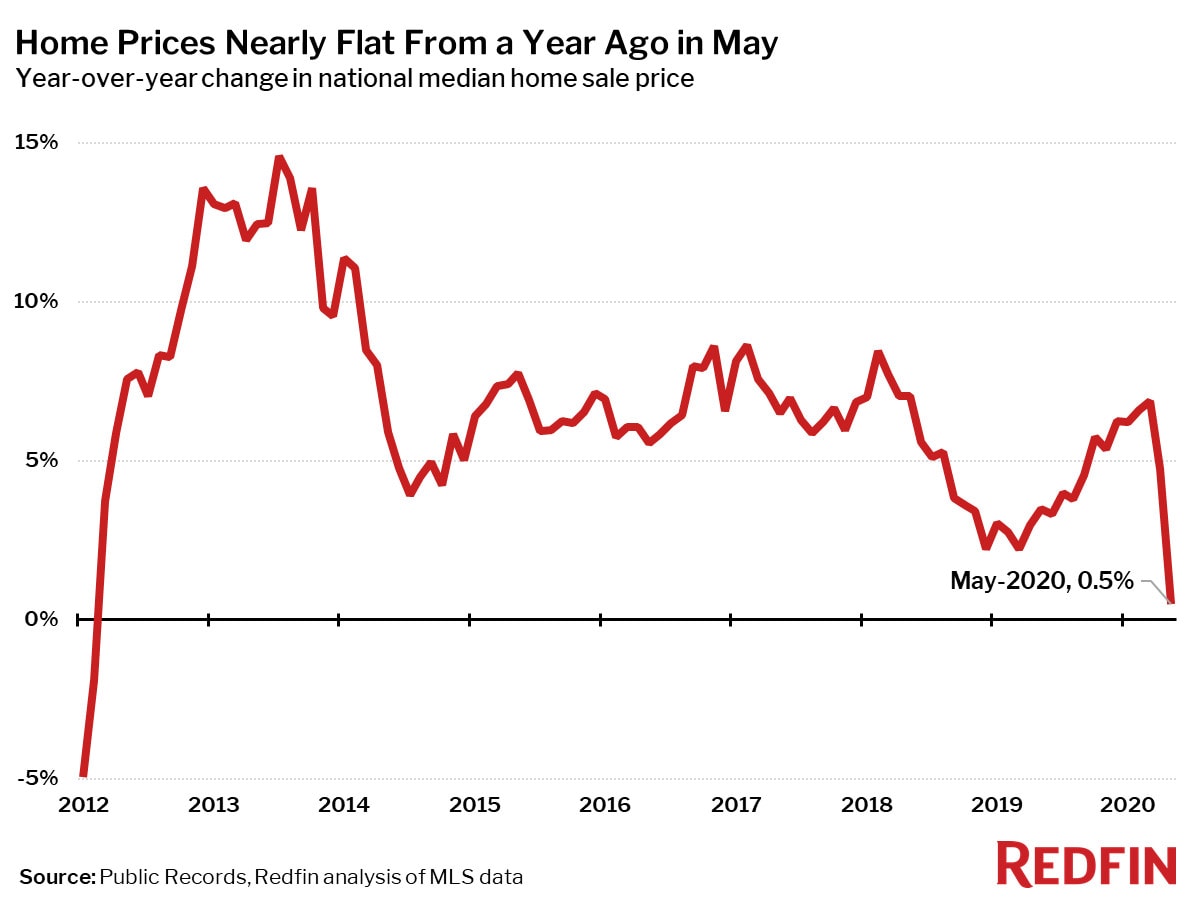
Most places still saw median prices increase, but four of the 85 largest metro areas Redfin tracks saw a year-over-year decline in the median sale price: Seattle ($581,750, -1.7%), North Port, FL ($285,000, -1.4%), Dallas ($300,000, -1.0%) and New Orleans ($234,250, -1.0%).
Home sales fell 11.7% nationwide from April on a seasonally-adjusted basis. That’s a big drop, but a marked improvement from the March to April drop of 21.5%, which was the largest decline on record (our data for this statistic goes back to January 2012).
Every single large metro saw double-digit year-over-year declines in home sales. The metro areas with the biggest slowdowns were in states like Michigan and Pennsylvania that had the most strict stay-at-home orders. For example, home sales fell 62.6% from a year ago in Detroit and 61.3% in Pittsburgh.
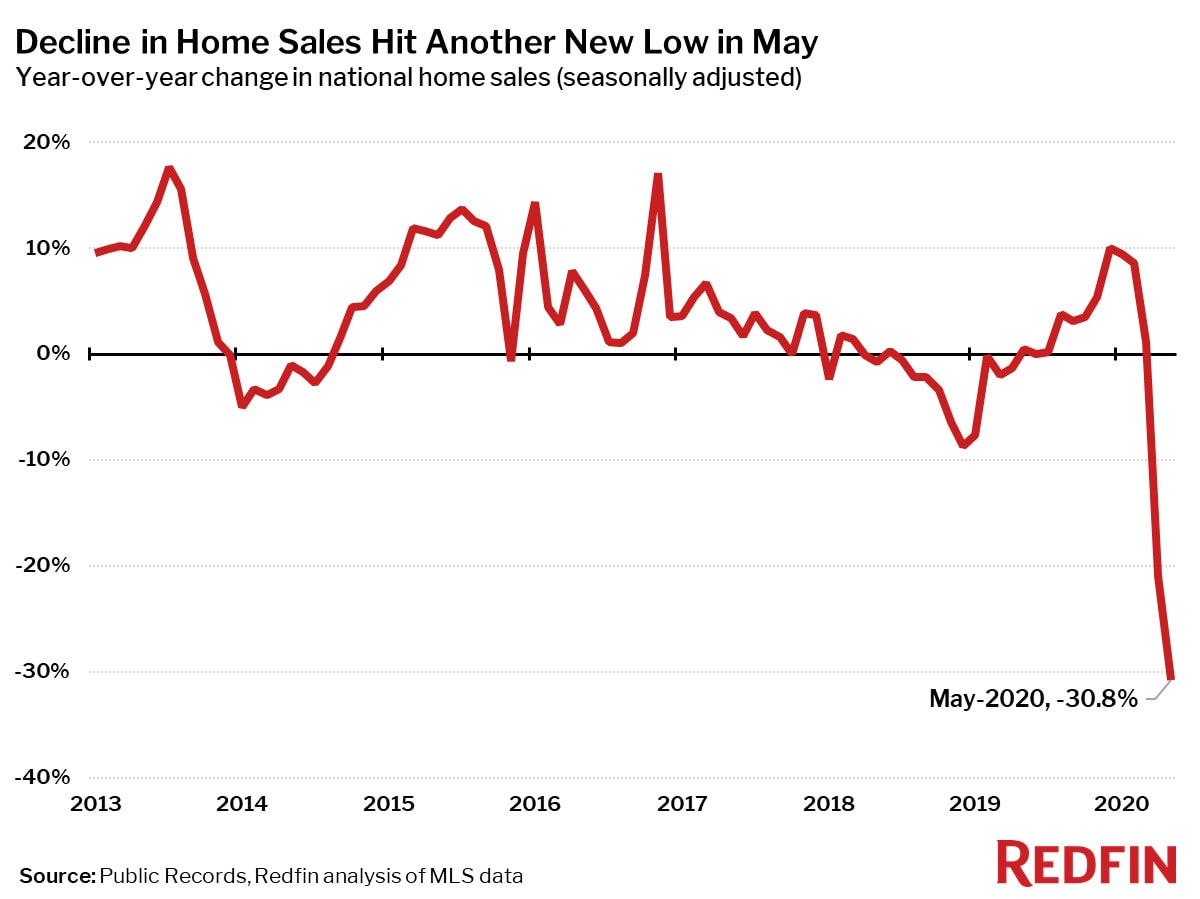
The national count of active listings of homes for sale fell 21.2% year over year in May, just shy of the April decline, which was the largest on record. This is the ninth straight month of declines. The 0.5% increase in the nationwide number of homes for sale between April and May represents a gain of fewer than 9,000 homes for sale during the month. None of the 85 largest metros tracked by Redfin posted a year-over-year increase in the count of seasonally-adjusted active listings of homes for sale. The smallest declines were in El Paso (-6.8%), San Francisco (-8.0%) and Fort Worth (-9.0%). Active listings is a count of all homes that were for sale at any time during the month.
Compared to a year ago, the biggest declines in active housing supply in May were in Allentown, PA (-55.8%), Tulsa (-52.0%) and Kansas City, MO (-51.9%).
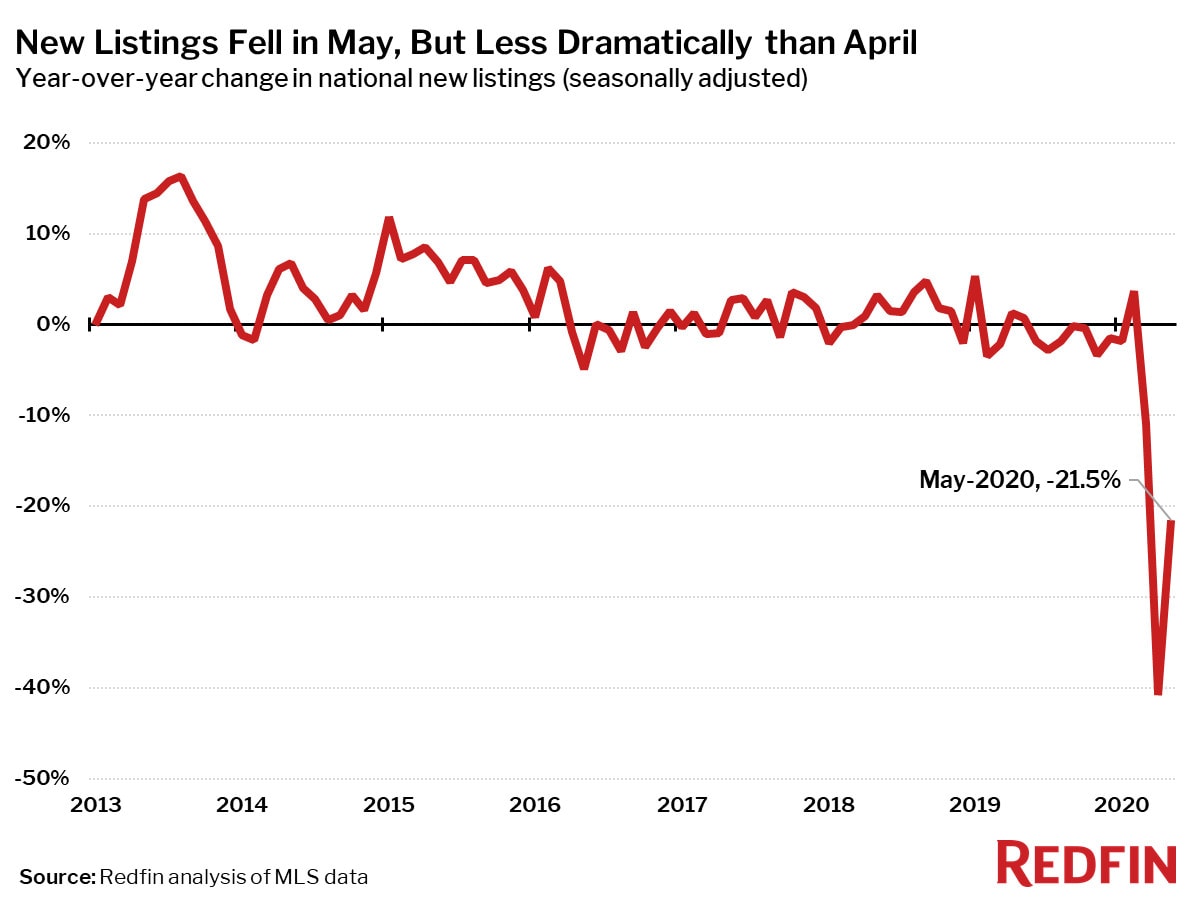
The number of new listings fell 21.5% compared with a year earlier, but surged 35.6% from the all-time low seen in April. This is a good sign that some balance may be returning to the market after the past few months of declining homes for sale and increasing homebuyer demand led to intense competition and bidding wars in some places.
An even more encouraging sign is the bounce back in the number of newly-constructed homes that were listed for sale in May, which was down half as much as the overall market—just 9.9% from a year earlier.
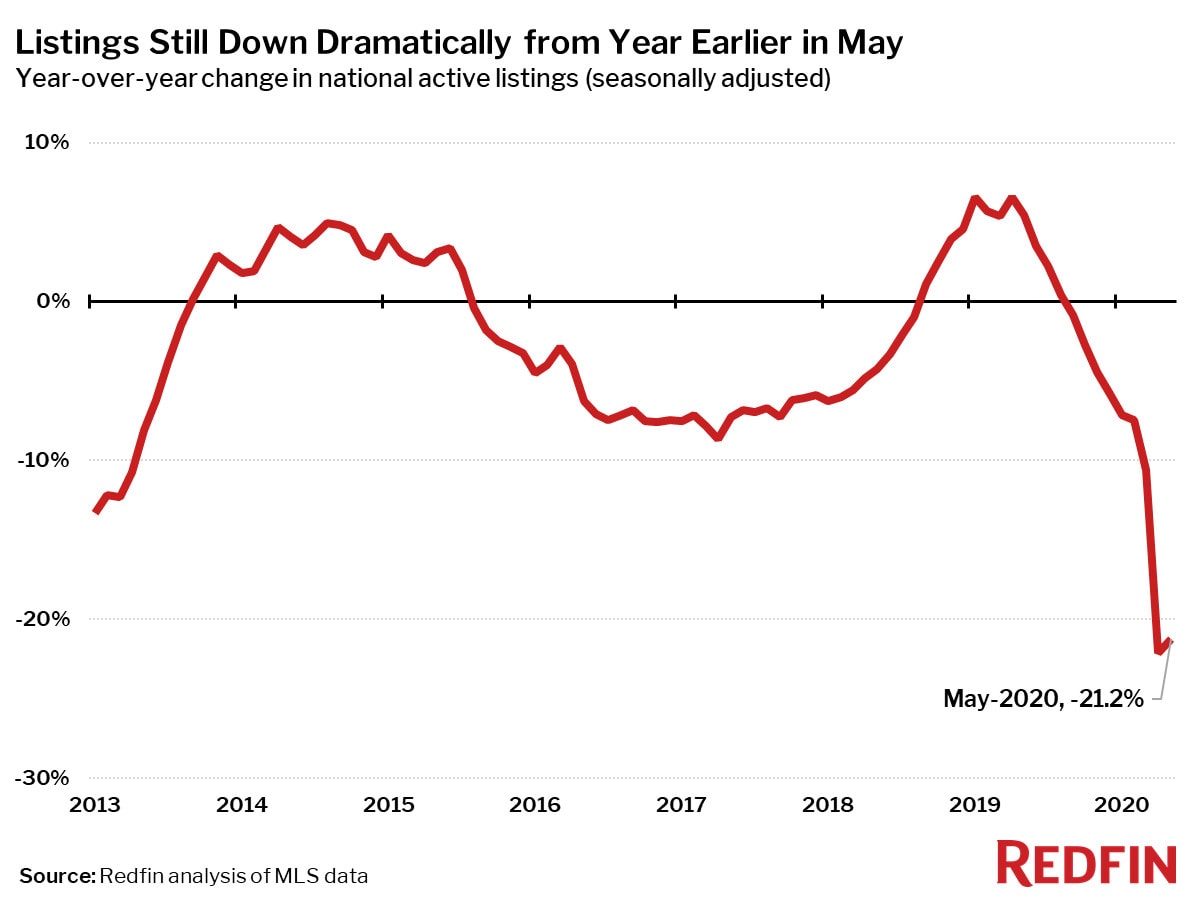
Other measures of competition in the market such as days on market and the share of homes sold above list price have remained relatively steady throughout the shutdowns and stay-at-home orders across the nation.
Trends we were seeing at the beginning of the year—intense bidding wars and a strong seller’s market—have continued unabated throughout the pandemic.
“Buyers have been out in droves, but the number of homes for sale is still super low,” explained Pittsburgh Redfin agent Sara Minshull. “We are seeing more homes listed for sale recently, but of course there were just so few before this that the new listings aren’t keeping up. There is just so much competition.”
Homes that sold in May spent the same number of days on market as they did during the same month a year earlier. In May, the typical home went under contract in 37 days.
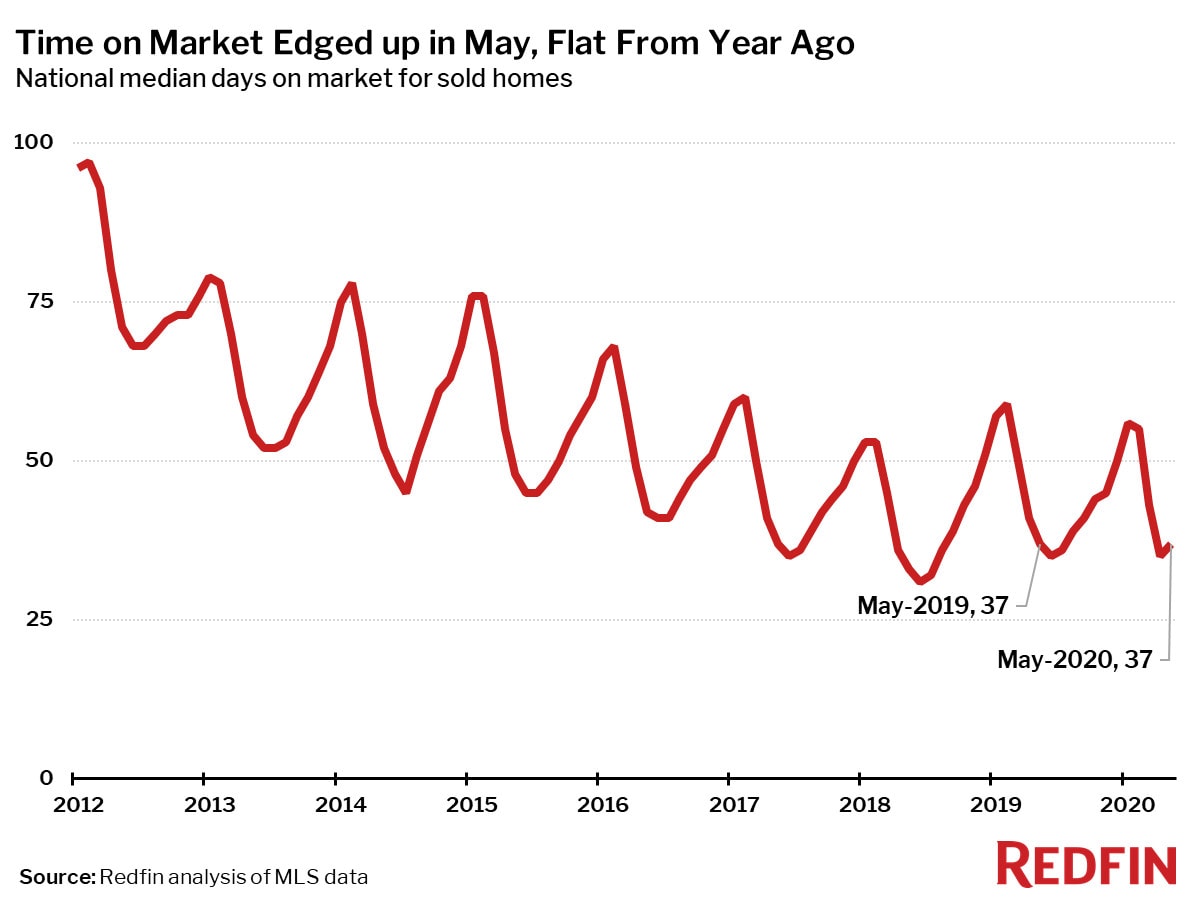
“The market still feels really crazy,” said Redfin agent Amber Allin, who serves Tacoma, Washington—the nation’s fastest market with half of all homes going under contract in just eight days. “There are so few homes for sale right now, and those that are in good condition are selling incredibly fast.”
The share of homes that sold above list price decreased just slightly, falling 0.6 percentage points year over year in May to 25.2%.
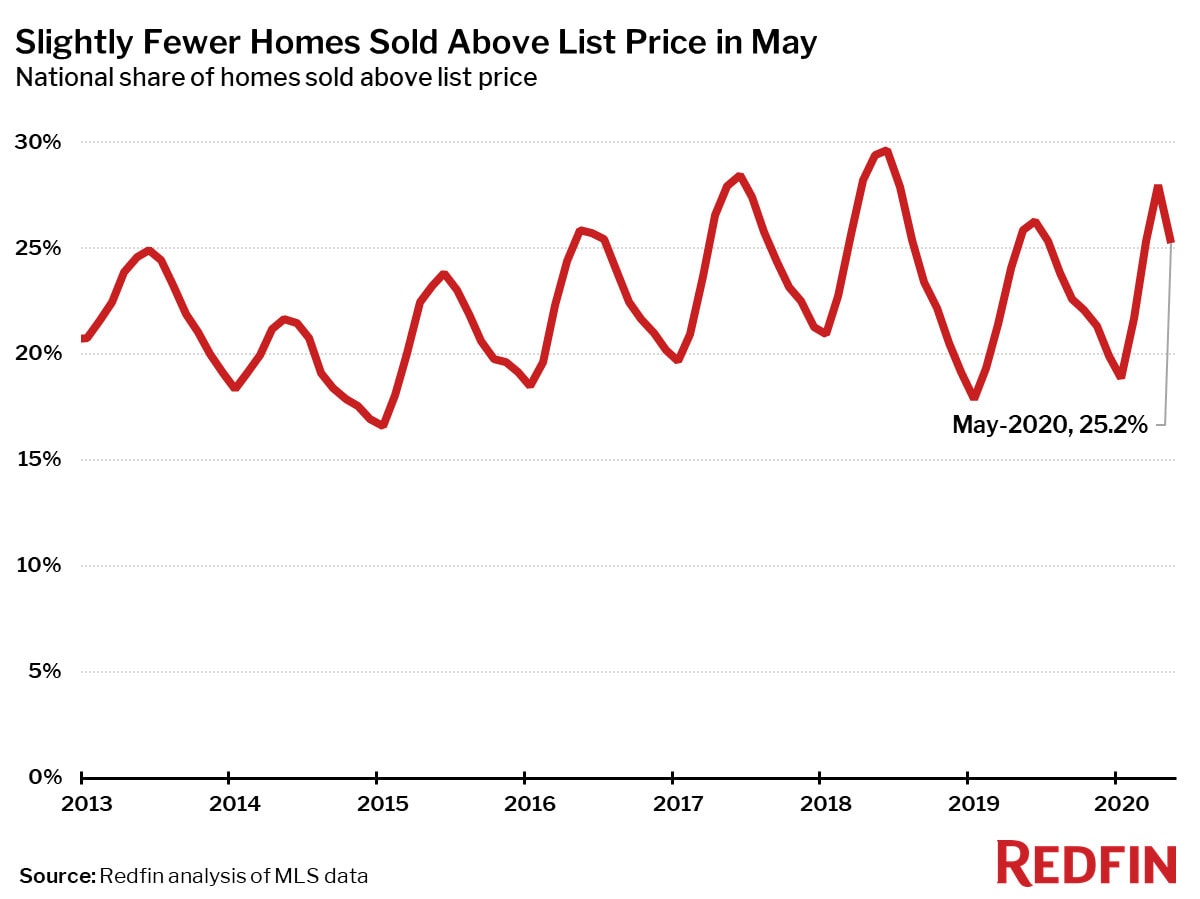
Competition
Prices
Sales
Inventory
Redfin Estimate
Below are market-by-market breakdowns for prices, inventory, new listings and sales for markets with populations of 750,000 or more. For downloadable data on all of the markets Redfin tracks, visit the Redfin Data Center.


